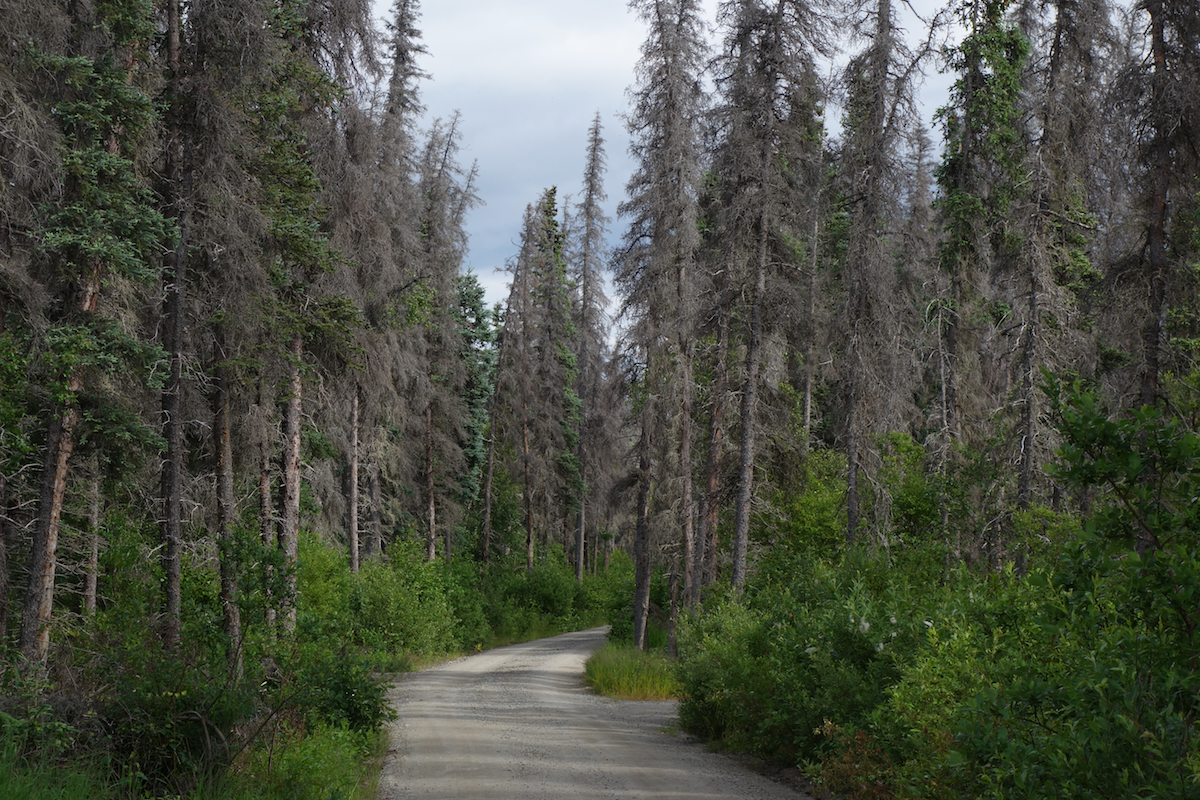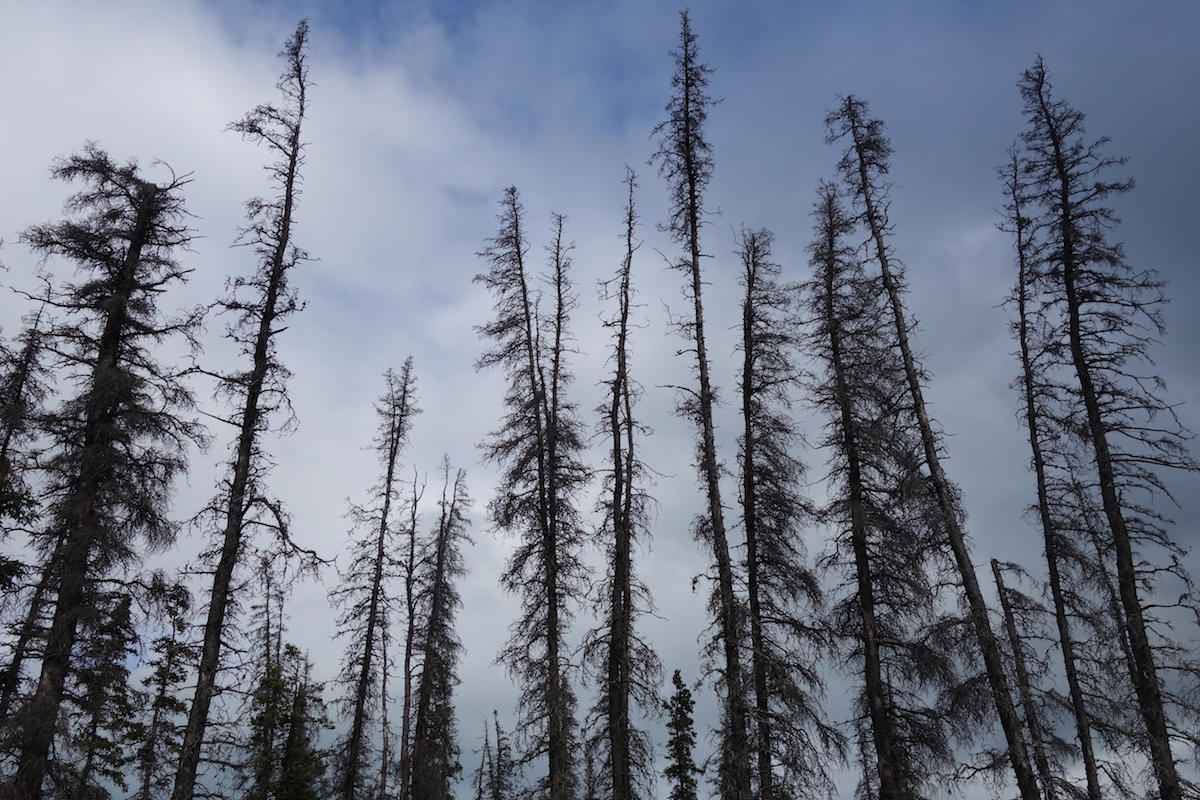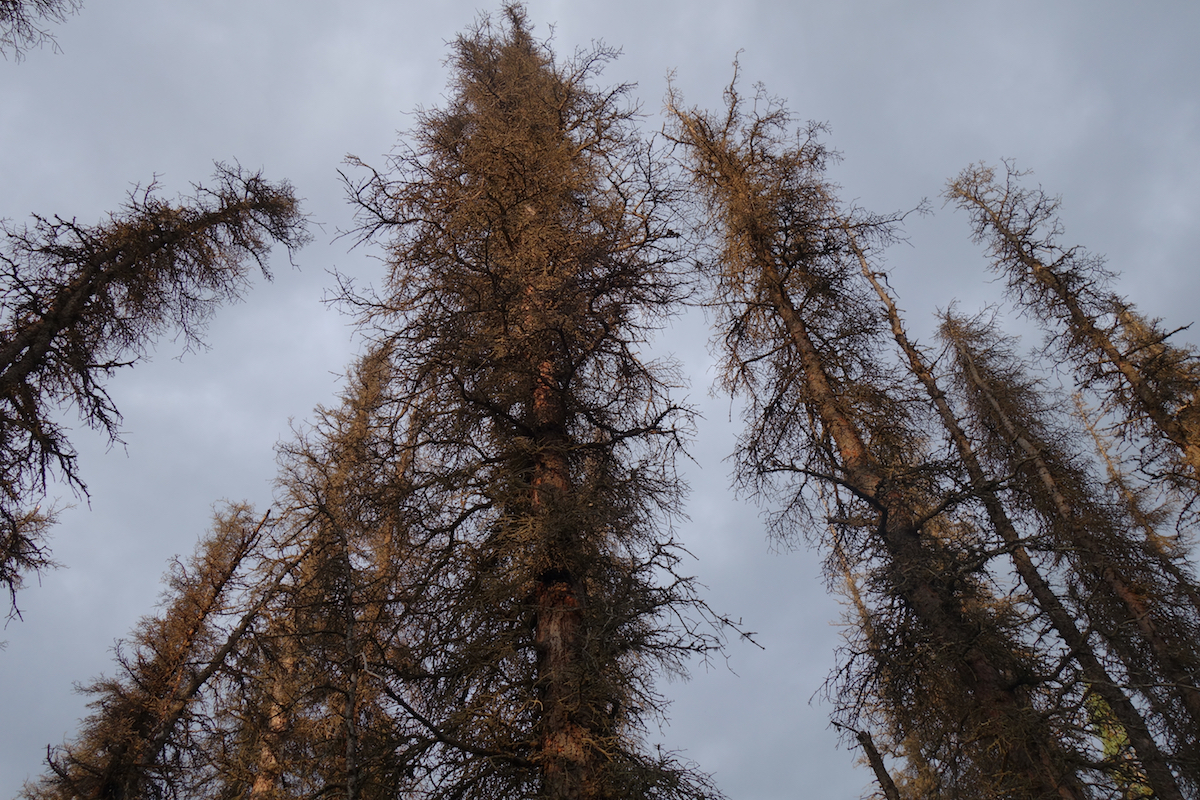
NPS Photo/A. LaValle
In the middle of otherwise dense emerald forests, many visitors to Brooks Camp quickly notice the ghostly stands of dead spruce trees that surround the area. In some places, these gray, skeletal trees seem to outnumber the trees that are alive. Even in the peak of summer as other trees grow and thrive, these dead trees can give the forest an eerie appearance.
Logically, concerned visitors may soon ask, “what caused this?”
As has been described previously on this blog, these trees fell victim to the spruce bark beetle, a native species that from time to time, on an average interval of 50- 100 years, causes widespread tree die-off. As they feed, the beetles in effect choke the tree, cutting off sap flow and starving the tree of nutrients. Though the visible effects can be dramatic, this is part of a normal forest disturbance cycle.
And though it is a natural occurrence, the area around Brooks Camp was hit particularly hard in the middle of the previous decade. A spell of relatively warm, dry years leading up to 2006 allowed the populations of the ever-present beetle to explode. The right conditions simply aligned for the beetle to thrive. In Katmai’s forests, the spruce bark beetle population increased a whopping 300% from 2005 to 2006, accorrding to data from the US Forest Service. Nearly 70,000 trees were reported under attack that year.

NPS Photo/A. LaValle
Though the dramatic outbreak has slowed since then, nearly a decade later we are still feeling its effects. Approximately 190,450 acres of forest in Katmai National Park and Preserve are now touched by spruce bark beetle-related tree die-off. A 2016 aerial survey conducted by the Forest Service showed a roughly 35% increase in spruce beetle activity as compared with new activity in 2015. Particular places of new activity include the areas along the North Arm of Naknek Lake and north of Lake Coville, east of the American River.
In Brooks Camp, the ghostly spindles of the dead trees are especially visible on the trail to Brooks Falls and along the road to the Valley of Ten Thousand Smokes. Their dry branches creak as they sway in the wind. Some of these trees have begun to fall down, adding to the rugged topography of the forest floor. But many more remain standing, their spines still upright and looking as skeletal as ever.
Are these trees a fire hazard? Given Katmai’s relatively wet coastal environment and lack of lightning, forest fires in the park are relatively rare. Further, a study done by the Kenai Wildlife Refuge in Southcentral Alaska has found no significant relationship between beetle-related die-off and wildfire occurrence in Alaska; in other words, beetle outbreaks have occurred more frequently than fire historically, and the loss of trees to beetle kill does not necessarily result in widespread wildfires.
As Alaska continues to experience a warming climate recent studies also indicate that spruce bark beetle outbreaks may become more frequent. As the climate warms, it is predicted that more of Alaska’s precipitation could arrive as rain instead of snow. This is particularly important because new research shows that trees that have better access to snowpack and snowmelt throughout the summer are better able to defend themselves from beetles during such outbreaks. In this way climate change will continue to alter the makeup and appearance of Katmai’s forests.
As we move through the aftermath of the previous beetle outbreak, we should recognize that we will see another in the future. But even as these dead spruce trees loom over the current Brooks Camp landscape, more sunlight is now reaching the forest floor. A new generation of trees and plants are beginning to emerge. The understory is becoming denser and more productive. The dead trees that have fallen are beginning to decompose, and as this cycle in the forest continues, life springs anew.

NPS Photo/A. LaValle
|
May 19, 2018
|
Last updated: May 18, 2018
